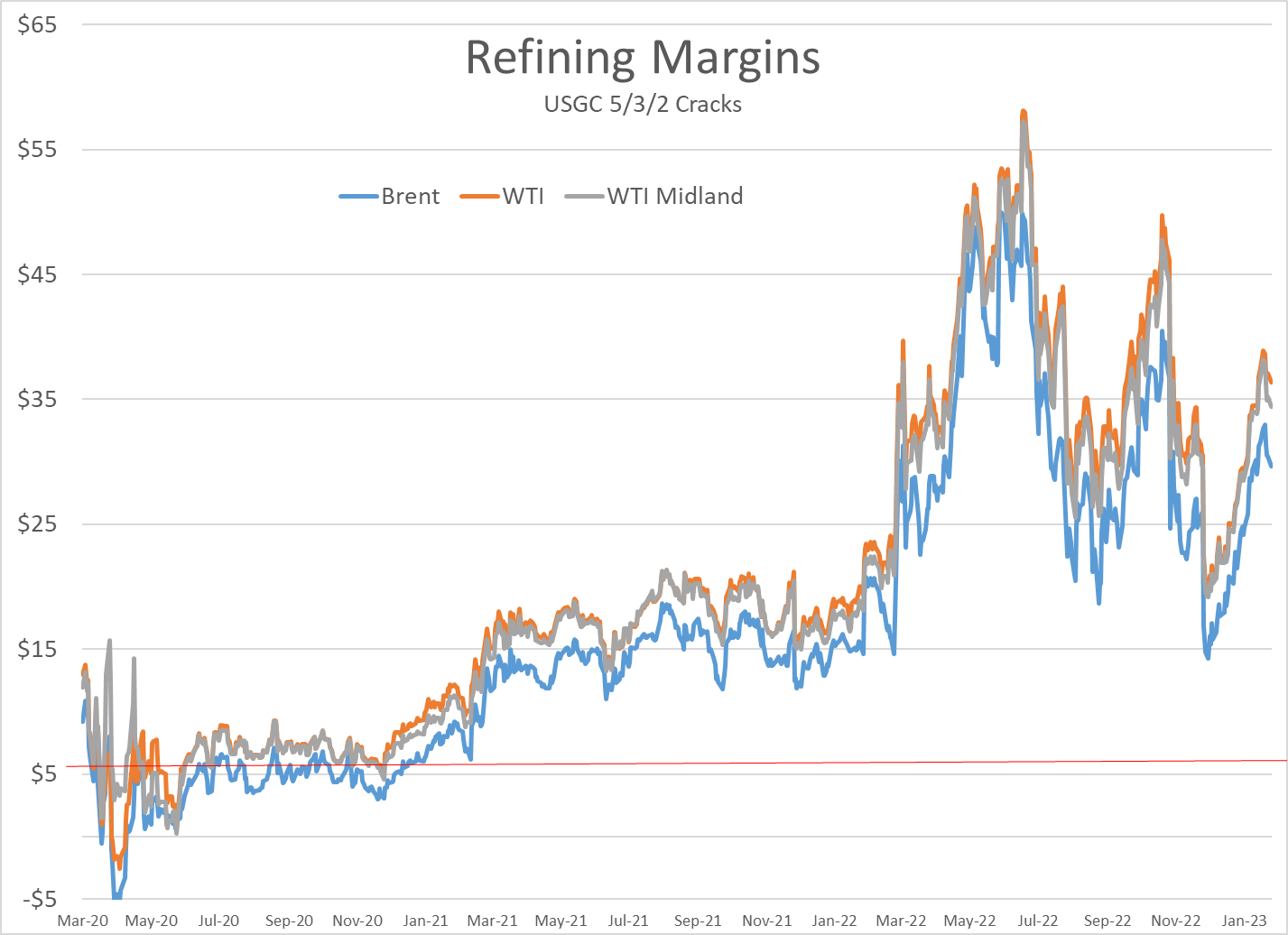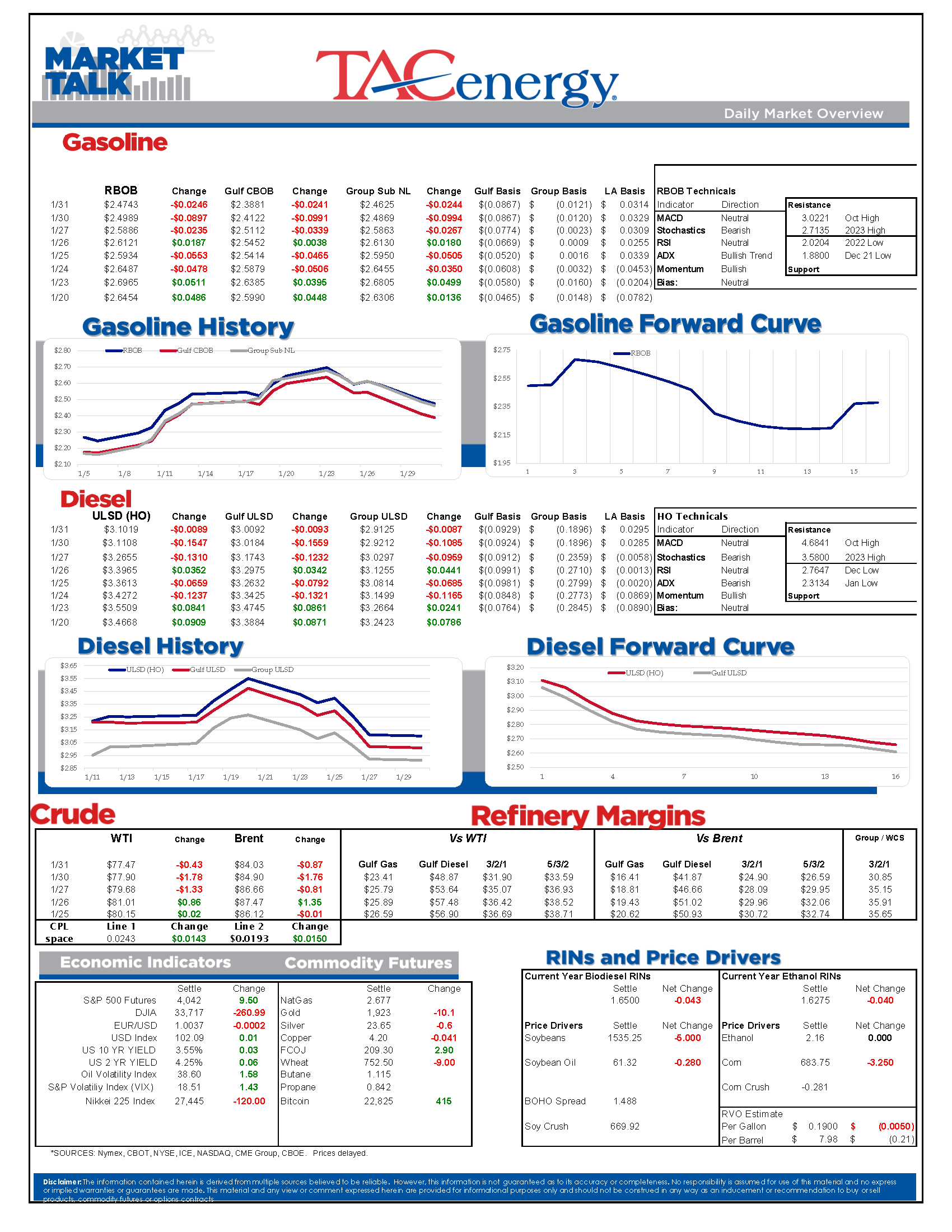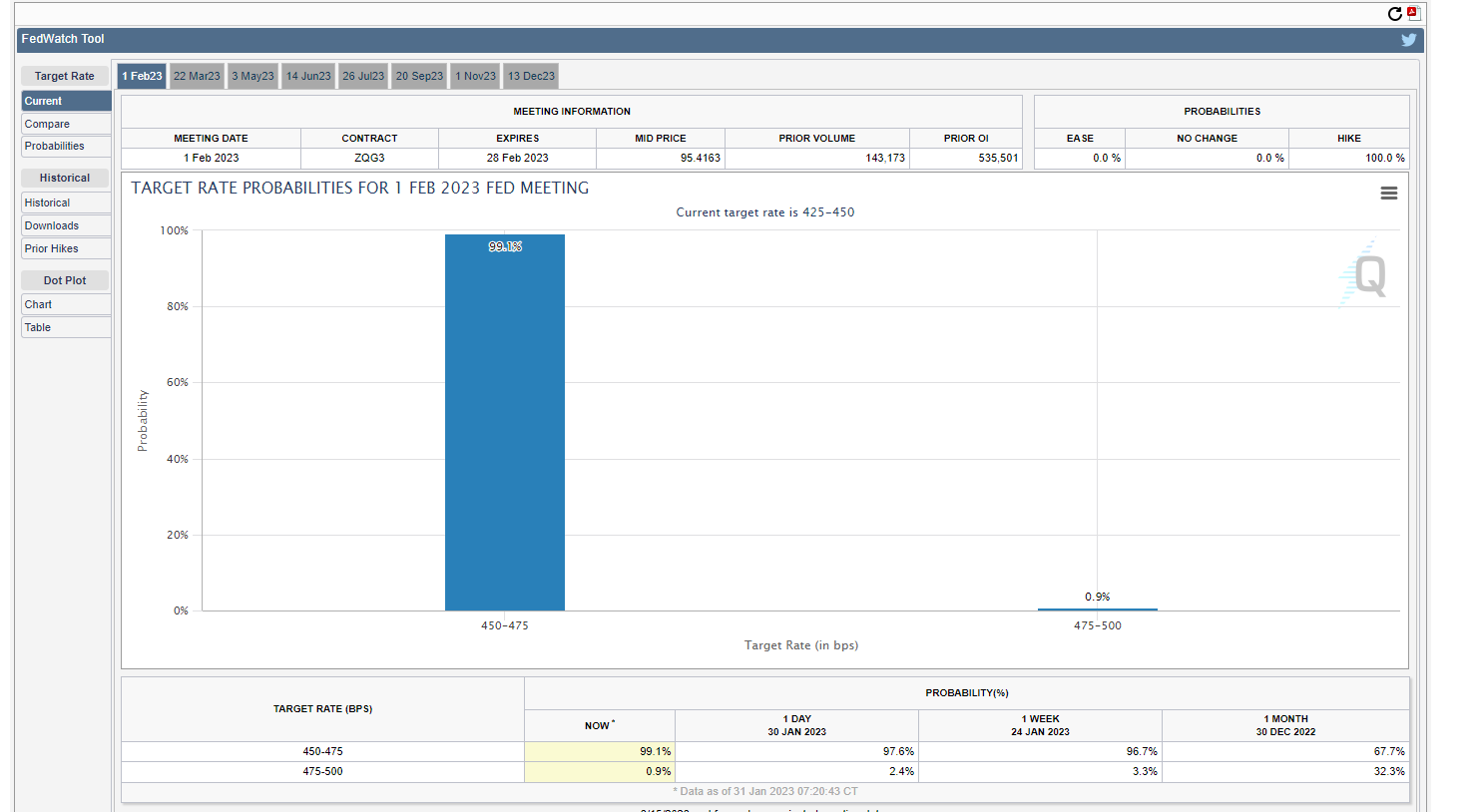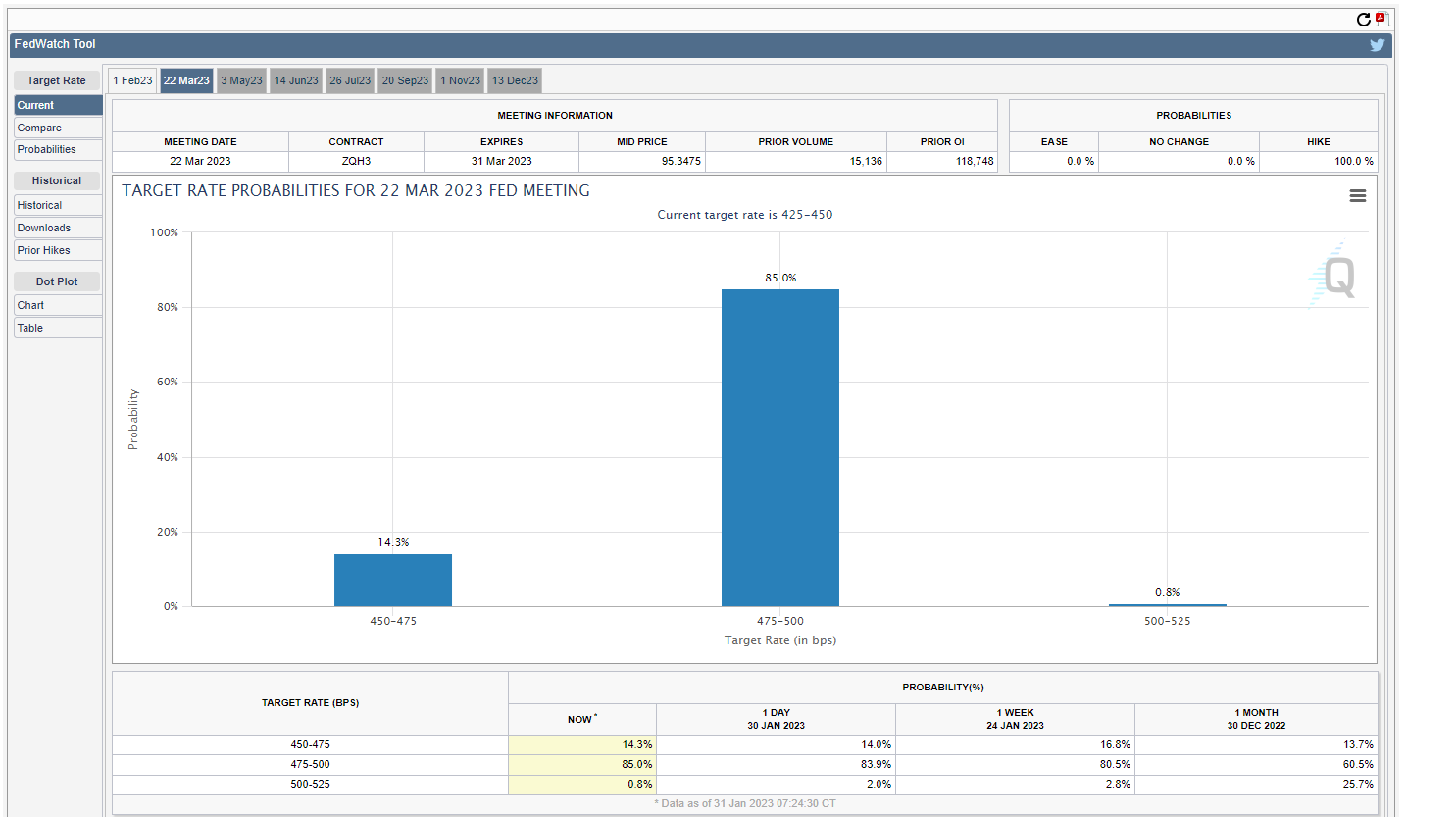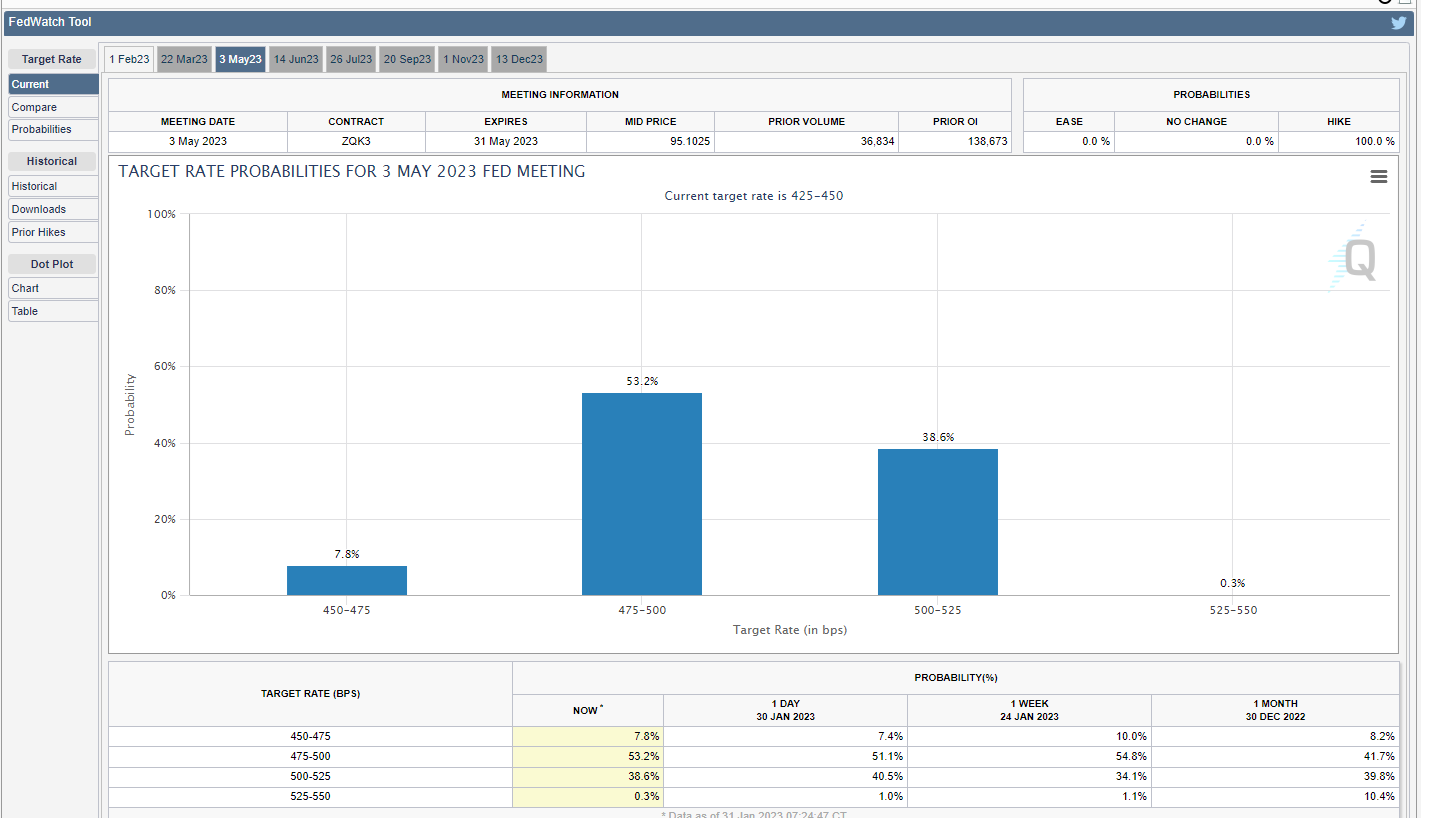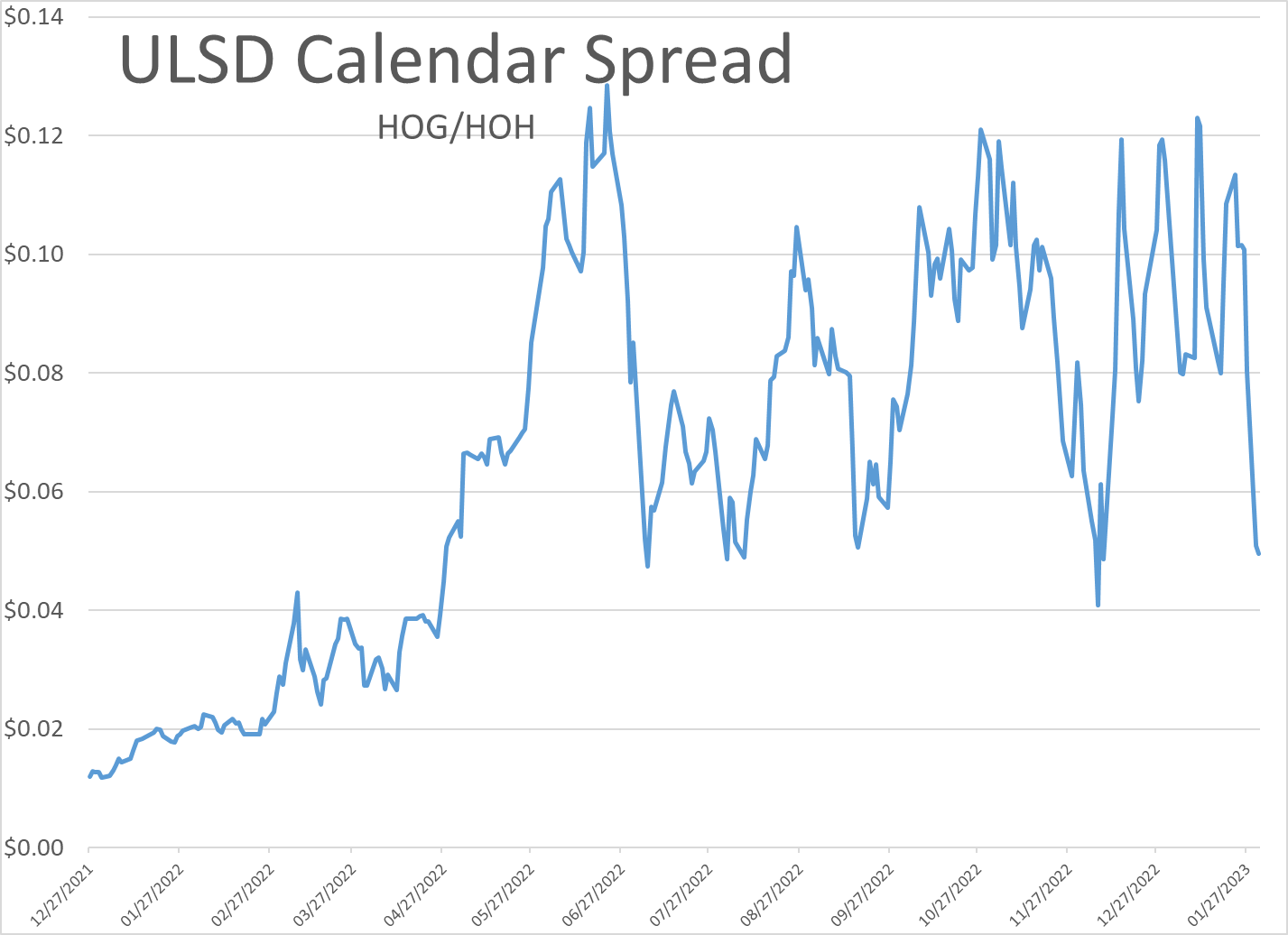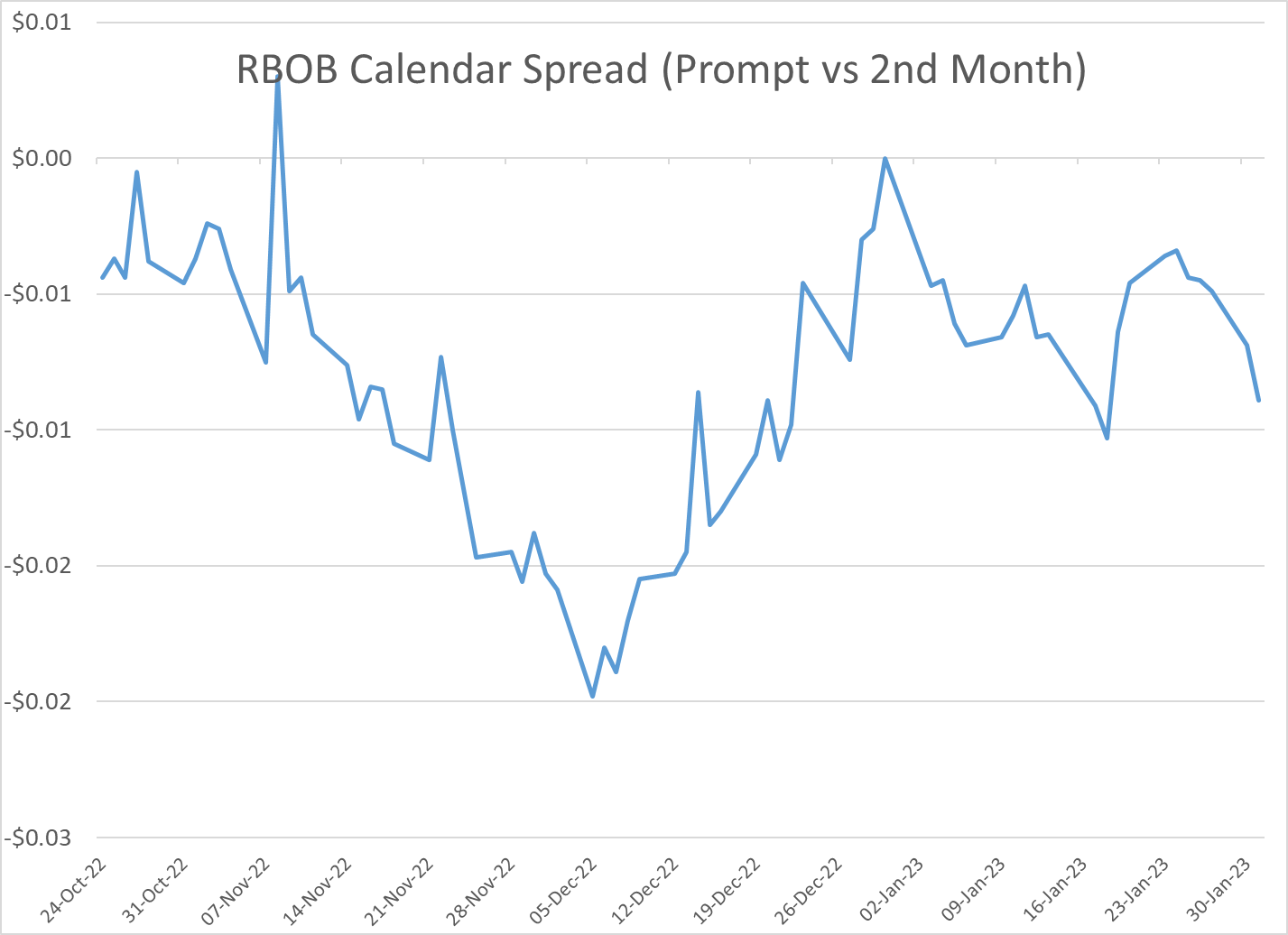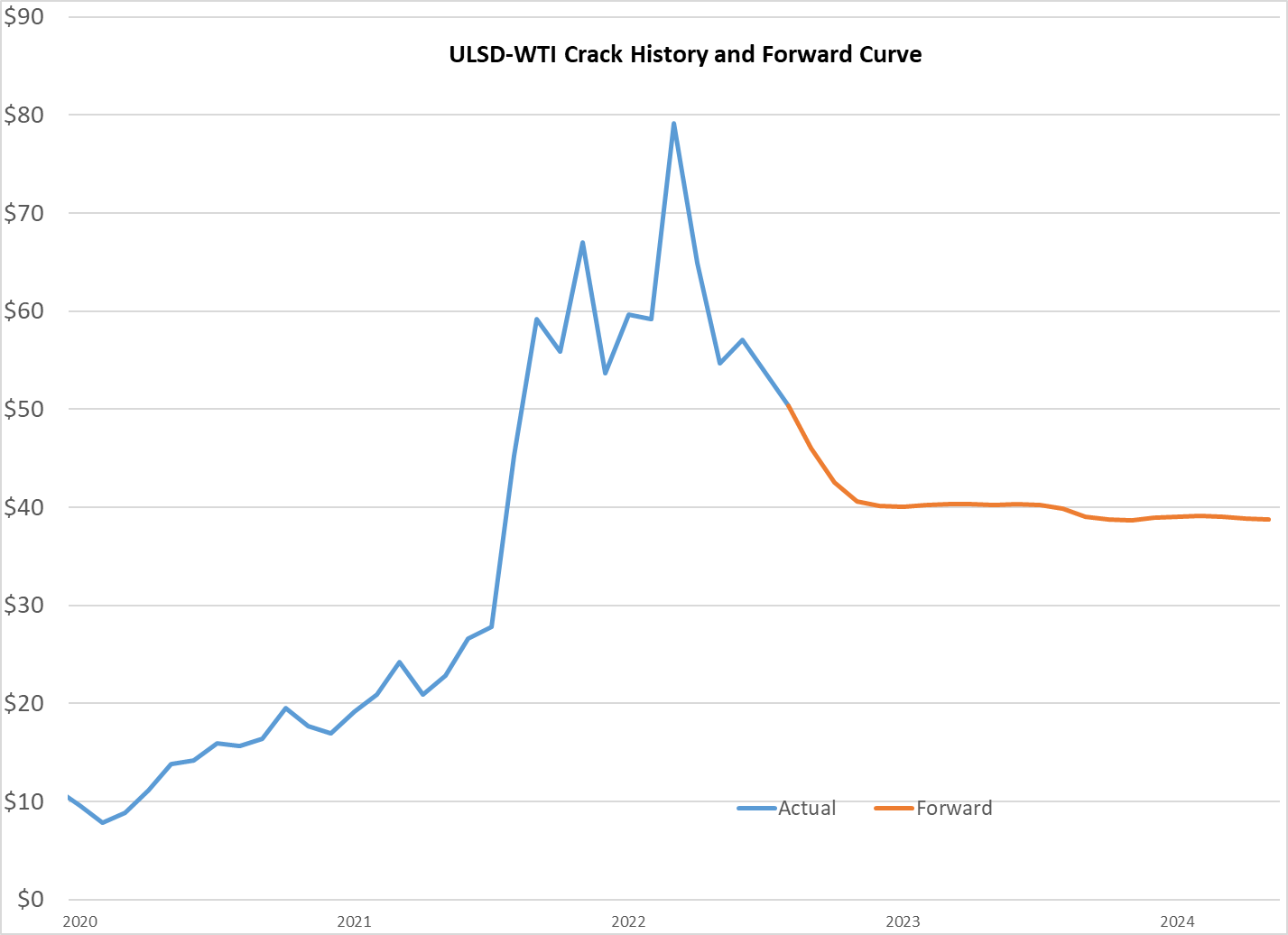ULSD Prices Drop Despite Looming Russian Supply Ban

ULSD continues to lead the energy complex lower as January winds to a close, dropping from a high of $3.58 one week ago to a low of $3.0570 this morning. Crude oil and gasoline prices have also come under heavy pressure, but have lagged far behind the moves in ULSD, which has pushed prompt diesel crack spreads by down by $12/barrel in just a week.
Why exactly diesel prices got so weak so fast is a bit of a mystery given that inventories remain well below their seasonal ranges, refineries across the country are running below normal levels due to a rash of unplanned issues, and the embargo on Russian diesel shipments starts this weekend.
The warmer than expected winter has certainly eased concerns of more severe shortages of natural gas and heating oil across Europe and the US North East, but European natural gas prices have been rebounding as temperatures are expected to drop again next week, and French workers are attempting to block more fuel deliveries today as part of the ongoing strikes against state pension reform.
Recession expectations could be a factor in this pullback, as they were during the last 2022 selloff as earnings season is showing that US consumers are slowing down purchases, while the FED is poised for another rate hike tomorrow.
Liquidations by the hedge funds that added new bets on higher prices last week, just in time for this pullback could also be at play, although we won’t get to see that data again until Friday.
The drop could be a sign of the classic “buy the rumor, sell the news” trading phenomenon with the upcoming Russian embargo, particularly given that exports have surged in recent weeks as buyers race to beat the deadline.
There’s also a real possibility that there simply is not a fundamental reason at all for this price pullback, and it has more to do with the big speculative funds that can be the fair weather fans of commodity markets, or the trading algorithms that account for most daily volume being programmed to sell after an 82 cent rally from a low of $2.76 in early December to $3.58 last week.
Whatever the cause, ULSD is now breaking its weekly trendline that propelled prices higher for 7 weeks, and sets up a test of the January lows at $2.92 if they can’t manage a bounce in the next day or two. Then again, if they do bounce, this 50 cent pullback in 5 trading days may be seen as nothing more than the latest big swing in an extraordinarily volatile market and a good buying opportunity for anyone that has a fuel budget.
Pretty much everyone expects the FED to raise rates by 25 basis points tomorrow, with the CME’s fedwatch tool showing a 99% probability of that outcome, and 85% that they’ll raise another 25 points in March. The big question is whether or not the FED will be done raising rates after that, with traders fairly evenly split in their bets on the rates beyond the next two months.
Exxon, Marathon and P66 all reported earnings for Q4 today, and surprised no-one with their strong results, even though refining margins pulled back from the record levels set earlier in the year.
Click here to download a PDF of today's TACenergy Market Talk.
Latest Posts
Gasoline Futures Are Leading The Way Lower This Morning
The Sell-Off Continues In Energy Markets, RBOB Gasoline Futures Are Now Down Nearly 13 Cents In The Past Two Days
Week 15 - US DOE Inventory Recap
Prices To Lease Space On Colonial’s Main Gasoline Line Continue To Rally This Week
Social Media
News & Views
View All
Gasoline Futures Are Leading The Way Lower This Morning
It was a volatile night for markets around the world as Israel reportedly launched a direct strike against Iran. Many global markets, from equities to currencies to commodities saw big swings as traders initially braced for the worst, then reversed course rapidly once Iran indicated that it was not planning to retaliate. Refined products spiked following the initial reports, with ULSD futures up 11 cents and RBOB up 7 at their highest, only to reverse to losses this morning. Equities saw similar moves in reverse overnight as a flight to safety trade soon gave way to a sigh of relief recovery.
Gasoline futures are leading the way lower this morning, adding to the argument that we may have seen the spring peak in prices a week ago, unless some actual disruption pops up in the coming weeks. The longer term up-trend is still intact and sets a near-term target to the downside roughly 9 cents below current values. ULSD meanwhile is just a nickel away from setting new lows for the year, which would open up a technical trap door for prices to slide another 30 cents as we move towards summer.
A Reuters report this morning suggests that the EPA is ready to announce another temporary waiver of smog-prevention rules that will allow E15 sales this summer as political winds continue to prove stronger than any legitimate environmental agenda. RIN prices had stabilized around 45 cents/RIN for D4 and D6 credits this week and are already trading a penny lower following this report.
Delek’s Big Spring refinery reported maintenance on an FCC unit that would require 3 days of work. That facility, along with several others across TX, have had numerous issues ever since the deep freeze events in 2021 and 2024 did widespread damage. Meanwhile, overnight storms across the Midwest caused at least one terminal to be knocked offline in the St. Louis area, but so far no refinery upsets have been reported.
Meanwhile, in Russia: Refiners are apparently installing anti-drone nets to protect their facilities since apparently their sling shots stopped working.
Click here to download a PDF of today's TACenergy Market Talk.

The Sell-Off Continues In Energy Markets, RBOB Gasoline Futures Are Now Down Nearly 13 Cents In The Past Two Days
The sell-off continues in energy markets. RBOB gasoline futures are now down nearly 13 cents in the past two days, and have fallen 16 cents from a week ago, leading to questions about whether or not we’ve seen the seasonal peak in gasoline prices. ULSD futures are also coming under heavy selling pressure, dropping 15 cents so far this week and are trading at their lowest level since January 3rd.
The drop on the weekly chart certainly takes away the upside momentum for gasoline that still favored a run at the $3 mark just a few days ago, but the longer term up-trend that helped propel a 90-cent increase since mid-December is still intact as long as prices stay above the $2.60 mark for the next week. If diesel prices break below $2.50 there’s a strong possibility that we see another 30 cent price drop in the next couple of weeks.
An unwind of long positions after Iran’s attack on Israel was swatted out of the sky without further escalation (so far anyway) and reports that Russia is resuming refinery runs, both seeming to be contributing factors to the sharp pullback in prices.
Along with the uncertainty about where the next attacks may or may not occur, and if they will have any meaningful impact on supply, come no shortage of rumors about potential SPR releases or how OPEC might respond to the crisis. The only thing that’s certain at this point, is that there’s much more spare capacity for both oil production and refining now than there was 2 years ago, which seems to be helping keep a lid on prices despite so much tension.
In addition, for those that remember the chaos in oil markets 50 years ago sparked by similar events in and around Israel, read this note from the NY Times on why things are different this time around.
The DOE’s weekly status report was largely ignored in the midst of the big sell-off Wednesday, with few noteworthy items in the report.
Diesel demand did see a strong recovery from last week’s throwaway figure that proves the vulnerability of the weekly estimates, particularly the week after a holiday, but that did nothing to slow the sell-off in ULSD futures.
Perhaps the biggest next of the week was that the agency made its seasonal changes to nameplate refining capacity as facilities emerged from their spring maintenance.
PADD 2 saw an increase of 36mb/day, and PADD 3 increased by 72mb/day, both of which set new records for regional capacity. PADD 5 meanwhile continued its slow-motion decline, losing another 30mb/day of capacity as California’s war of attrition against the industry continues. It’s worth noting that given the glacial pace of EIA reporting on the topic, we’re unlikely to see the impact of Rodeo’s conversion in the official numbers until next year.
Speaking of which, if you believe the PADD 5 diesel chart below that suggests the region is running out of the fuel, when in fact there’s an excess in most local markets, you haven’t been paying attention. Gasoline inventories on the West Coast however do appear consistent with reality as less refining output and a lack of resupply options both continue to create headaches for suppliers.

